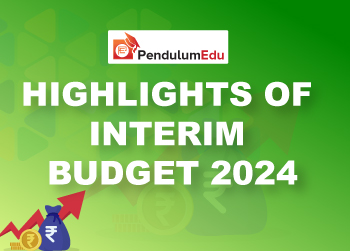Topic: Banking System
1. Analytical Centre of Excellence has been opened by Karnataka Bank in Bengaluru.
- The centre is developed in association with Ernst and Young (EY) as project partner.
- It will help in accelerated incubation of artificial intelligence (AI)/machine learning (ML) models. It will also help in their integration to business.
- Analytical Centre of Excellence will be a key differentiator in increasing Karnataka Bank’s transformation into a progressive ‘digital bank of future’.
- Karnataka Bank is a Scheduled Commercial Bank based in Mangaluru, Karnataka. It is a private sector bank. Mahabaleshwara MS is its MD and CEO.
Topic: Indian Economy/Financial Market
2. Government has lowered its borrowing plan for current Fiscal Year (2022-23) by ₹10,000 crore.
- Finance Ministry has announced lowering in the borrowing for FY23 by ₹10,000 crore to ₹14.21 lakh crore.
- Earlier, Union Cabinet approved extending the free foodgrains programme by 3 months at a cost over ₹44,700 crore.
- Government plans to borrow ₹5.92 lakh crore (41.7% of ₹14.21 lakh crore) in the second half of FY23 through dated securities, including ₹16,000 crore through the issuance of Sovereign Green Bonds (SGrBs).
- The gross market borrowing of ₹5.76 lakh crore (40.5 per cent) shall be completed through 20 weekly auctions.
- The market borrowing will be spread over 2, 5, 7, 10, 14, 30 and 40 years securities.
- The share of borrowing (excluding SGrB) under different maturities will be as given in the following table.
|
Maturity
|
Share in borrowing
|
|
2 year
|
6.25%
|
|
5 year
|
12.15%
|
|
7 year
|
10.42%
|
|
10 year
|
20.83%
|
|
14 year
|
19.1%
|
|
30 year
|
15.63%
|
|
40 year
|
15.63%
|
- According to a statement of Ministry of Finance, RBI has fixed the Ways and Mean Advances (WMA) limit for H2 of FY 2022-23 at ₹50,000 crore.
- RBI has done this to take care of temporary mismatches in Government accounts.
- In order to retain an extra subscription of up to 2,000 crore against each of the securities, the government would continue to use its greenshoe option.

Topic: Indian Economy/Financial Market
3. Retail inflation for industrial workers increased to 5.85% in August 2022.
- As per data released by the Ministry of Labour and Employment, All-India CPI-IW for August 2022 grew by 0.3 points to reach 130.2.
- Industrial workers' consumer price index grew to 5.85% in August 2022.
- CPI-IW was 5.78% in July and at 4.8% in August 2021. Retail inflation for industrial workers was higher at 6.16% in June 2022.
- Food inflation increased to 6.46% in August 2022. It was 5.96% in July 2022 and 4.83% in August last year.
- The maximum upward pressure in current index came from Food and Beverages group.
- The group of Pan, Supari, Tobacco and Intoxicants has shown slight increase to 145.7 points in August from 144.4 in July.
- The category of clothing and footwear also increased to 128.2 points in August from 127.2 points in July.
- The group of fuel and light decreased to 177.4 points in August from 178.2 points in July.
- At centre level, Solapur has shown a maximum increase of 3.9 points followed by Agra with 3.2 points.
Topic: Indian Economy/Financial Market
4. The urea subsidy has used up three-fourths of the budgetary allotment in the first five months (April-August) of the current fiscal year.
- This is 83% more than during the same time (April-August) of the last year.
- Fiscal Deficit stands at 32.6% of Budget Estimate in April-August of the current fiscal year, data released by the Controller General of Accounts (CGA) showed.
- Government allocated over ₹63,000 crore as urea subsidy and ₹42,000 crore for nutrient-based fertilisers in this fiscal’s budget.
- As per CGA data, government spent around ₹47,310 crore on urea subsidy during the first five months of the current fiscal. This is 44% of the budget allocation.
- During the same period last year, the government spent ₹25,769 crore.
- Over ₹13,600 crore were spent on nutrient-based fertilisers. This was 33% of budget allocation.
- Almost same was spent during the corresponding period last fiscal.
- The overall fertiliser subsidy is now 57% of the budget estimate.
- Despite higher fertiliser subsidy, the overall expenditure during the April-August period contracted.
- The overall expenditure contracted due to a 4% fall in revenue expenditure.

Topic: Indian Economy/Financial Market
5. India’s unemployment rate declined to 6.43% in September according to CMIE data.
- This is the lowest level of unemployment rate since January 2022.
- The all-India unemployment rate stood at 8.28% in August 2022.
- All-India unemployment rate was at 6.56% in January 2022.
- Centre for Monitoring Indian Economy (CMIE) data showed urban unemployment in September declined to 7.7% from 9.57% in August.
- Rural unemployment also declined to 5.84% in September from 7.68% in August.
- Unemployment rate has fallen despite a rise in the labour force participation rate (LFPR).
- The states with the highest unemployment rates are Rajasthan (23.8%), Jammu and Kashmir (23.2%) and Haryana (22.9%).
- The states with the lowest unemployment rates are Chhattisgarh (0.1%), Assam (0.4%), Uttarakhand (0.5%) and Madhya Pradesh (0.9%).
Topic: Taxation
6. Transportation service by vessel/aircraft for export of goods will be taxed with effect from October 1.
- Government has decided not to continue with the exemption beyond September 30.
- Now, service charges for transportation by a vessel of the export consignment will attract IGST (Integrated Goods & Services Tax) at 5%. In the case of transportation by aircraft, the rate of IGST will be 18% but with ITC.
- Service charges for transportation by a vessel of the export consignment will now be subject to IGST (Integrated Goods & Services Tax) at the rate of 5%.
- In the case of transportation by aircraft, the rate of IGST will be 18%.
- There will not be IGST on the transportation of import consignment.
- GST is levied on the date of invoice. If goods have been transported on or before September 30, 2022, but the invoice has been issued on or after October 1, 2022, then also IGST will be levied.
- Finance Ministry has announced a reduction in windfall gain tax on domestically produced crude and on diesel.
- This levy has been withdrawn on the export of Aviation Turbine Fuel (ATF).
- Domestically produce crude will now attract windfall gain tax at the rate of ₹8,000 per tonne as against ₹10,500 per tonne.
- On export of diesel, the rate has been lowered to ₹5 a litre from ₹10. On ATF, it is nil as against ₹5 a litre. India first imposed windfall profit taxes on July 1.
Topic: RBI
7. RBI increased repo rate by 50 basis points (bps) to 5.9% which is the highest in last three years.
- The Monetary Policy Committee of RBI has hiked the repo rate for the fourth time in a row.
- RBI has cut real GDP growth projection by 20 bps from 7.2% to 7%. The retail inflation projection for FY23 remain unchanged at 6.7%.
- RBI governor Shaktikanta Das highlighted that inflation is moving around 7% and is expected to remain around 6% in the second half of 2022-23.
- The standing deposit facility (SDF) rate will be now 5.65% and the marginal standing facility (MSF) rate and the Bank Rate stand at 6.15%.
- Repo rate is the rate at which RBI lends money to commercial banks.
- RBI governor also announced four additional measures:
- Discussion paper on Expected Loss-Based Approach to be released for loan-loss provisioning by banks
- Discussion paper on securitization of Stressed Assets Framework (SSAF) to be released.
- Internet banking facility for customers of Regional Rural Banks.
- Regulation of offline payment aggregators.
- RBI has decided to merge the 28-day variable rate reverse repo (VRRR) auctions with the fortnightly 14-day main auction keeping in view the moderation in surplus liquidity.
Topic: Indian Economy/Financial Market
8. India's current account deficit increased to 2.8% of GDP in Q1 of FY 2023.
- In Q1 of FY 2023, India's current account deficit has increased to USD 23.9 billion (2.8% of GDP).
- The trade deficit has increased from USD 54.5 billion in the previous quarter to USD 68.6 billion.
- The current account deficit has mainly increased on account of a higher trade deficit.
- As per the RBI, net service receipts have increased and services exports have also grown by 35.4%.
- Private transfer receipt has shown an increase of 22.6% as compared to the previous year.
- As per the RBI data, net foreign direct investment has increased from USD 11.6 billion to USD 13.6 billion.
- Net outgo on the income account has increased to USD 9.3 billion from USD 7.5 billion.
- Net external commercial borrowings to the country recorded an outflow of $3 billion in Q1 of 2022-23.
- Current account deficit (CAD):
- It is defined as the difference between the value of exports of goods and services and the value of imports of goods and services.
- It is based on income from trade in goods, trade in services, and transfer payments (remittances, grants and gifts received by a country or its residents).
Topic: Indian Economy/Financial Market
9. Index of Eight Core Industries for August 2022 has increased by 3.3%.
- The combined index of eight core industries increased by 3.3% (provisional) compared to Index of August 2021.
- Index of Eight Core Industries measures combined and individual performance of production in 8 core industries- Coal, Crude Oil, Cement, Fertilisers, Refinery Products, Electricity, Natural Gas, and Steel.
- The Eight Core Industries comprise 40.27% of the weight of items included in the Index of Industrial Production (IIP).
- Final growth rate of Index of Eight Core Industries for May 2022 has been revised to 19.3% from its provisional level 18.1%.
Topic: Miscellaneous
10. Prime Minister, Shri Narendra Modi launched 5G Services in India on 1 October at the 6th edition of Indian Mobile Congress 2022.
- In the recent auction, 51,236 MHz was allocated to Telecom Service Providers with total revenue of Rs. 1,50,173 Crores.
- The economic impact of 5G on India is likely to reach $450 Billion by 2035.
- Department of Telecommunication established 5G Testbed with help of IITs, IISc Bengaluru and SAMEER to develop technology in 2018.
- To promote 5G technology, a 5G Hackathon was commenced in 2020.
- Since 2021, an inter-ministerial committee on 5G use-cases has been functioning.
- Indigenous 5G Non-Stand Alone (NSA) core has been developed by C-DOT. C-DOT is also developing 5G Radio Access Network (RAN) in collaboration with local industry and start-ups.
- ‘Encapsulate, Engage and Experience a New Digital Universe’ is the theme of the 6th India Mobile Congress 2022.
- The main objective of the Indian Mobile Congress is to promote new technologies, foster international regional cooperation, promote entrepreneurship and innovation, etc.
Topic: Reports and Indices
11. India climbed to 40th rank among 132 countries in the WIPO’s Global Innovation Index 2022.
- In 2015, India’s rank was 81 in Global Innovation Index. In 2021, India ranked 46 in the index.
- In Global Innovation Index 2022, Switzerland has topped and emerged as the world’s most innovative economy for 12th consecutive time.
- Switzerland is followed by US, Sweden, UK, Netherlands, Republic of Korea, Singapore, Germany, Finland and Denmark.
- Rank of India’s neighbouring countries in 2022 GII: China (11th), Sri Lanka (85th), Pakistan (87th), Bangladesh (102nd), Nepal (111th).
- In terms of income group, India has topped in the lower-middle income countries group in the index.
- The Global Innovation Index 2022 announced the biggest science and tech innovation clusters in the world with the highest density of inventors and scientific authors.
- In 2022, Tokyo–Yokohama is the top science and tech hub in the world, followed by Shenzhen–Hong Kong–Guangzhou (China and Hong Kong, China), Beijing (China), Seoul (Republic of Korea) and San Jose–San Francisco (United States).
- Global Innovation Index 2022 is the 15th edition of Global Innovation Index. The theme of 2022 index is “What is the future of innovation-driven growth?”
- Global Innovation Index (GII):
- It is annually published and compiled by Cornell University, INSEAD and the World Intellectual Property Organization.
- For a second year, the GII is published by WIPO in partnership with the Portulans Institute, with the support of partners- the Brazilian National Confederation of Industry (CNI, Brazil), the Confederation of Indian Industry (CII, India), Ecopetrol (Colombia) and the Turkish Exporters Assembly (TİM, Türkiye).
- Overall GII score is the average of the Innovation Input Sub-Index and Innovation Output Sub-Index. While Innovation Input Sub-Index comprises of five pillars, Innovation Output Sub-Index comprises of two pillars.


 Previous
Previous 
 Latest
Latest 








Comments